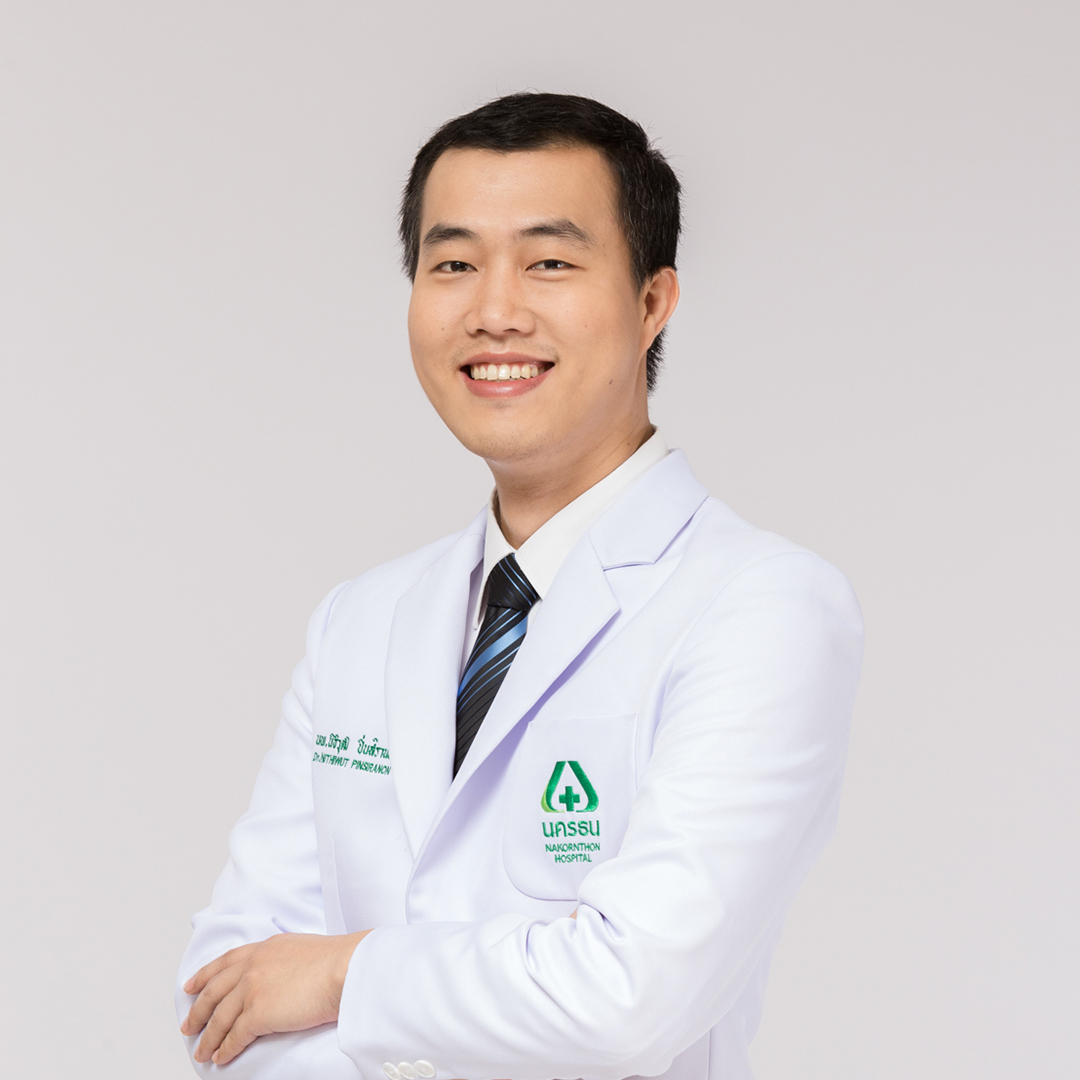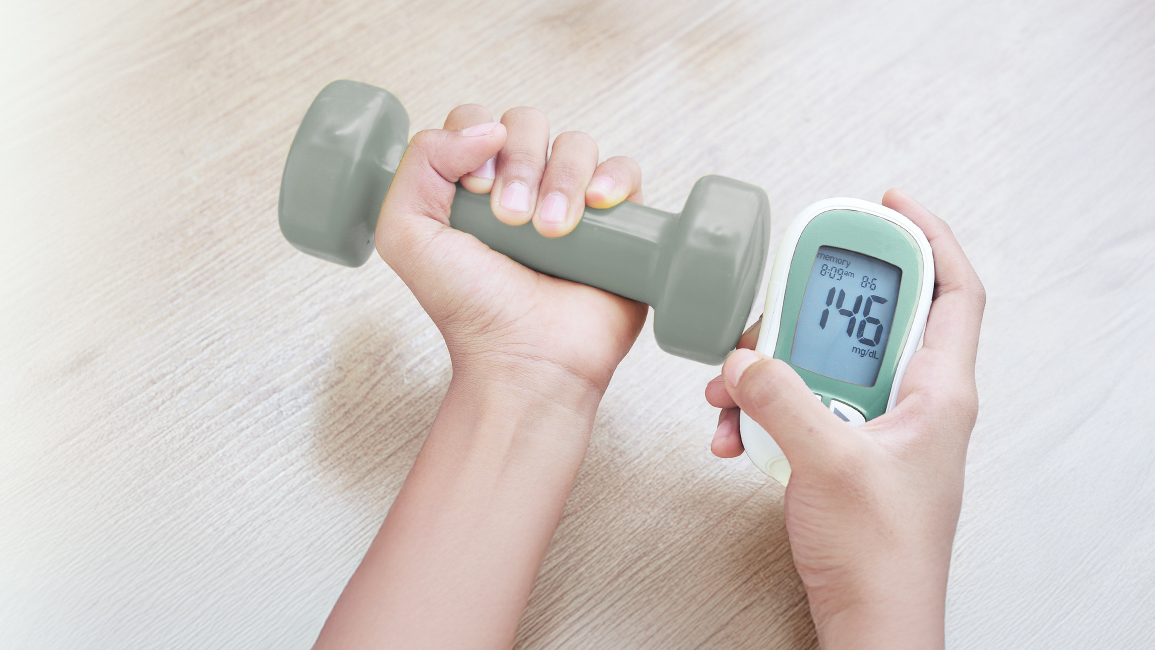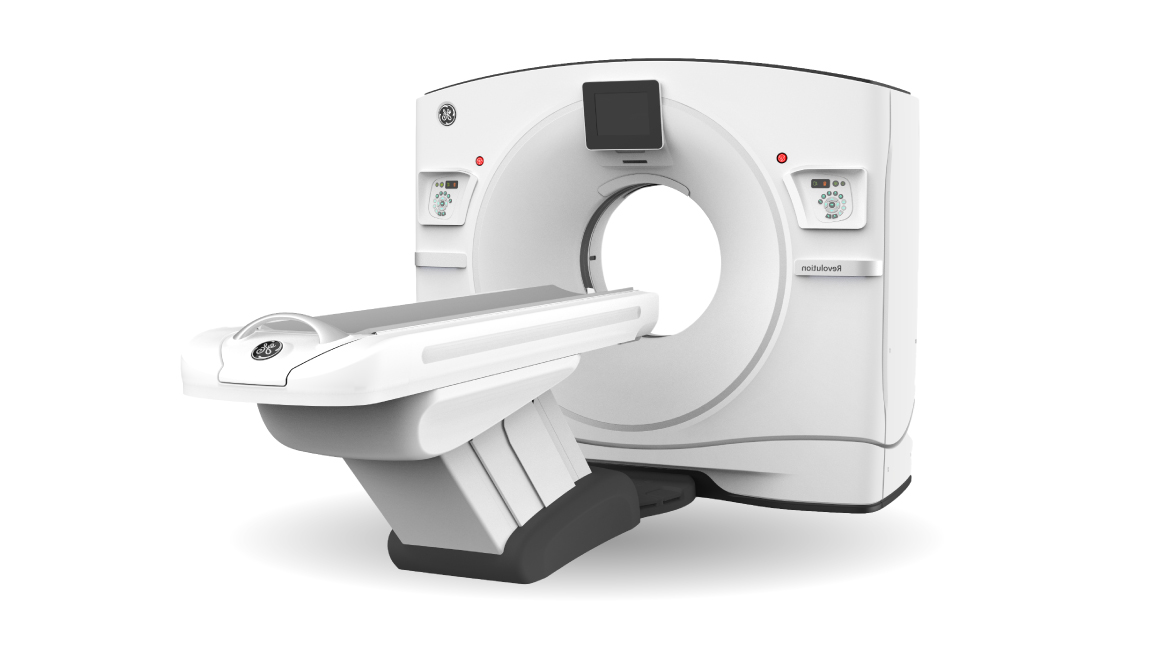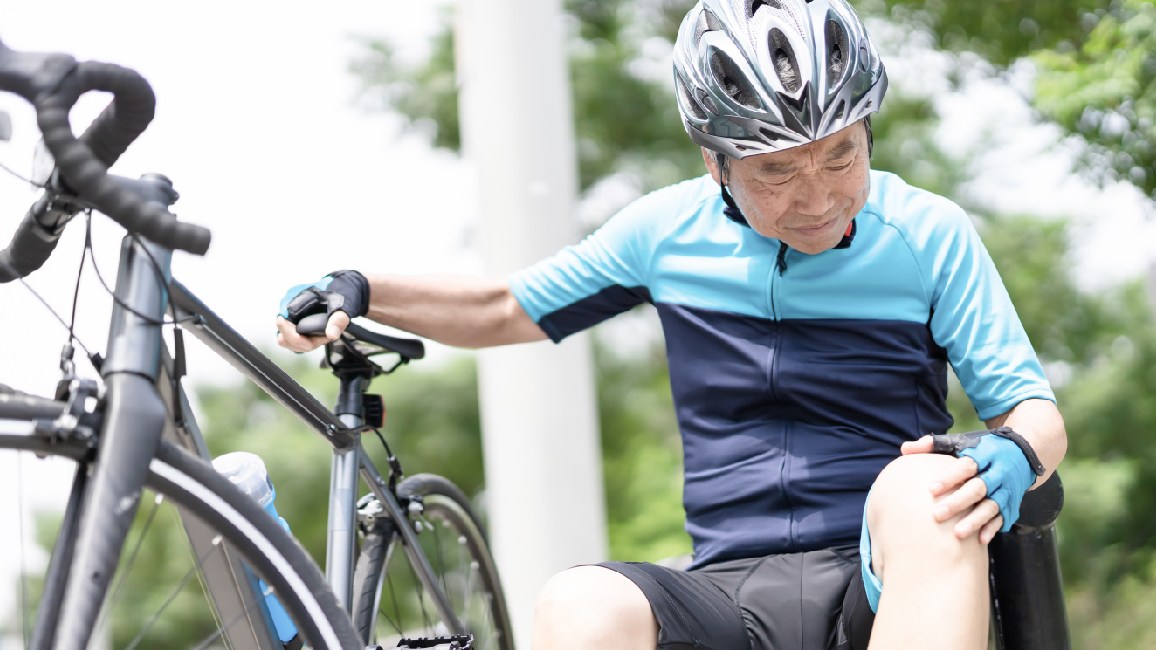Osteoarthritis of the knee, stiff shoulder and hip joint disturbing problems in the elderly
Center : Orthopedics Center
Article by : Dr. Nithiwut Pinsiranon
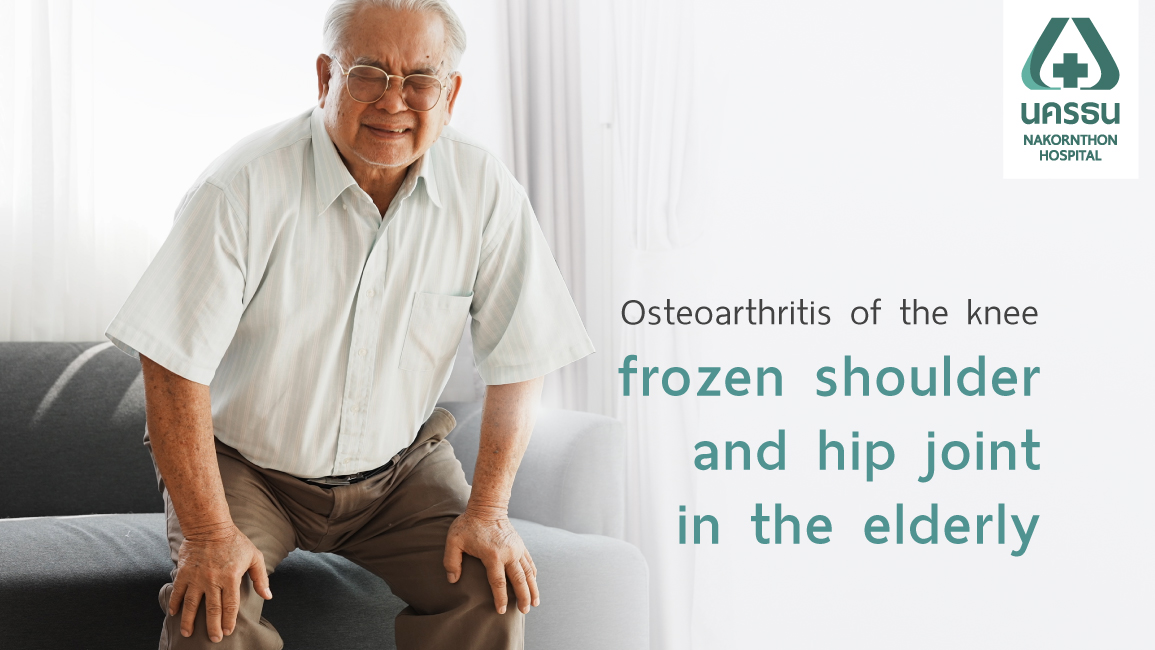
Elderly people with osteoarthritis of the knee, stuck shoulder and hip joint. If not treated properly symptoms of the disease will continue, causing pain when moving, deformed knee arthritis unable to walk normally, shoulder pain and unable to lift arms. The more pain there is, the more it is necessary to reduce movement. The reduction in movement makes the muscles around the joint weaker, especially hip fractures a highly dangerous condition. Because fractures in the elderly are difficult to treat and cause complications such as bloodstream infections, pneumonia, bladder infections muscle weakness pressure sores and some may be fatal.
3 problems with osteoarthritis that are common in the elderly
1. Knee osteoarthritis : Symptoms begin with intermittent pain when resting the knee. The pain will be relieved, and it will hurt more when the joint is used a lot. In severe cases, the pain is constant, stiffness noise in the knee. Some are stuck followed by the occurrence of deformation and degenerative swollen knee. Some people have their legs bent out and have problems using the knee joint, such as sitting on a low bench, going up and down stairs, including walking.
2. Frozen shoulder is a condition that causes shoulder pain and inability to move the shoulder joint to the limit. Either move it yourself or let someone else help you move it. There are 3 phases of the symptom of a frozen shoulder, which are:
- In the pain phase, the patient will feel the pain gradually increases, pain with movement. The pain is so intense at night that it interferes with sleep. The range of motion of the joint will gradually decrease.
- In the adjoining phase, the pain from the initial stage is reduced. The range of motion of the shoulder joint in all directions is significantly reduced can greatly affect daily activities; and
- During the recovery period, pain is reduced. The range of motion of the shoulder joint will gradually improve with proper treatment.
3. Hip Arthritis is an inflammation of the hip joint caused by the cartilage that covers the surface of the joint wears off, causing pain in the groin or front thigh. Stuck in hip movements, symptoms tend to worsen when moving and will be better when resting which when there is inflammation of hip osteoarthritis for a long time. Elderly patients avoid hip joint movements to reduce pain resulting in attachment and unable to rotate or stretch the hip joint. The thigh muscles are atrophied and weaken, some people may come to the doctor with problems with uneven short legs.
Diagnosis of osteoarthritis in the elderly
The doctor will diagnose by taking a history of illness, especially pain, unusual appearance and a thorough physical examination. If your doctor suspects an abnormality in your hip, knee, or shoulder, your doctor may send you for an X-ray, computerized tomography (CT scan) scan, or magnetic resonance imaging (MRI), an ultrasound scan to exclude other diseases out according to the appropriateness of each patient to get an accurate diagnosis.
Treatment of osteoarthritis in the elderly
1. Non-surgical treatment
Initially, drug treatment is used. There are many forms, both externally applied, injected into the joints, orally. Some drugs can be consulted with a pharmacist. But some will have to pay according to the doctor's treatment plan. The goal of treatment is to relieve pain and inflammation. Swollen joints heal as quickly as possible, including emphasizing the patient's behavior, modifying the behavior of the correct use of the joints, weight control, Muscle exercise, use of support equipment including changing practices to prevent further deterioration of the joints, such as modifying sitting, lying, standing, and walking positions.
Shoulder arthritis treatment will be palliative depending on the stage of the disease. It will help most patients get better. The goal is to reduce pain, increase the range of motion and returning to use the shoulder joint in daily activities as follows:
- Pain phase Treatment focuses on reducing pain and inflammation. May provide pain relievers and anti-inflammatory.
- Stuck period, treatment will focus on increasing the joint range. Patients can exercise themselves by stretching and bending the shoulder joints every day. Before bending the shoulder joint, compress it with a heating pad. After bending the shoulder joint, a cooling pad may be applied to prevent inflammation. If it doesn't improve, you may consider physical therapy using various heating devices and bending the shoulder joint by a physical therapist to help normalize the condition faster.
- The recovery phase focuses on exercises to strengthen the muscles around the shoulder joint.
If shoulder stiffness does not improve and interferes with daily life after 4-6 months of full treatment, the doctor may consider surgical treatment such as general anesthesia to bend the shoulder join or endoscopic surgery to cut the fascia or tissue that holds the shoulder joint, etc.
Hip osteoarthritis In the early stages, is treated with medication. together with the exercise and behavior modification. Correct use of the hips get enough sleep light exercise. This will help reduce severe pain and help slow the progression of the disease.
2. Surgical treatment
Osteoarthritis in the case of severe osteoarthritis patients. The doctor will consider using the treatment technology by knee arthroplasty which can be divided into
- Partial knee replacement surgery Unicompartmental Knee Arthroplasty (UKA) is a surgical removal of the degenerative surface of the knee joint. By keeping the knee joint surface in the part where the cartilage is still in good condition and replacing it with an artificial joint surface and only some artificial cartilage.
- Knee replacement surgery (Total Knee Arthroplasty or TKA) patients with severe osteoarthritis. There was pain all over the knee and leg core, so it was necessary to have a non-invasive surgery. Total replacement of the knee joint
Shoulder arthritis If palliative treatment does not improve and the cause of the condition can be corrected with surgery. The doctor will consider recommending shoulder arthroscopy. It is an operation in which 3-4 holes are made to access the shoulder, each hole is approximately 0.5 - 1 cm in order to insert the instrument. That is, a camera about 4 mm in size that will bring the image inside the joint to be displayed on the screen and the doctor closes the incision with suture using special tools.
Advantages of shoulder arthroscopy surgery This makes it possible to see the pathology in the joints clearly and can correct pathology well the wound is small Tissues and muscles around joints are less injured than open surgery. This makes less pain for the patient after surgery, can do physical activity faster, recovers faster and reduces the length of hospital stay.
Hip arthroplasty is another option. to reduce pain, increase the range of motion of the joint and fix the problem of unequal leg length, make patients have a better quality of life. Currently, hip replacement surgery can be performed in several ways, for example:
- Hip replacement Hemiarthroplasty is the replacement of only one side of the hip joint, which cuts only the head of the femur and inserts the prosthesis only on the head and shank.
- Total Hip Arthroplasty
The condition in which the joints are deformed due to regressive changes in the physical condition, which is directly related to increasing age should be properly maintained. If chronic discharge is not treated will bring difficulties in the life of the elderly and become a burden for long-term caregivers, such as bedridden, unable to help themselves and many complications as follow, etc., so should see a specialist doctor, for effective treatment. In addition, the elderly will have a good quality of life continue to help yourself.
Online Consultation
Free of Charge
Article of Orthopedics Center
High-Speed CT scan 443 Slices: Precision, Speed, and Reduced Radiation Exposure

